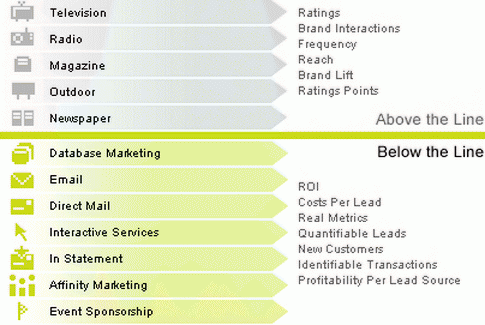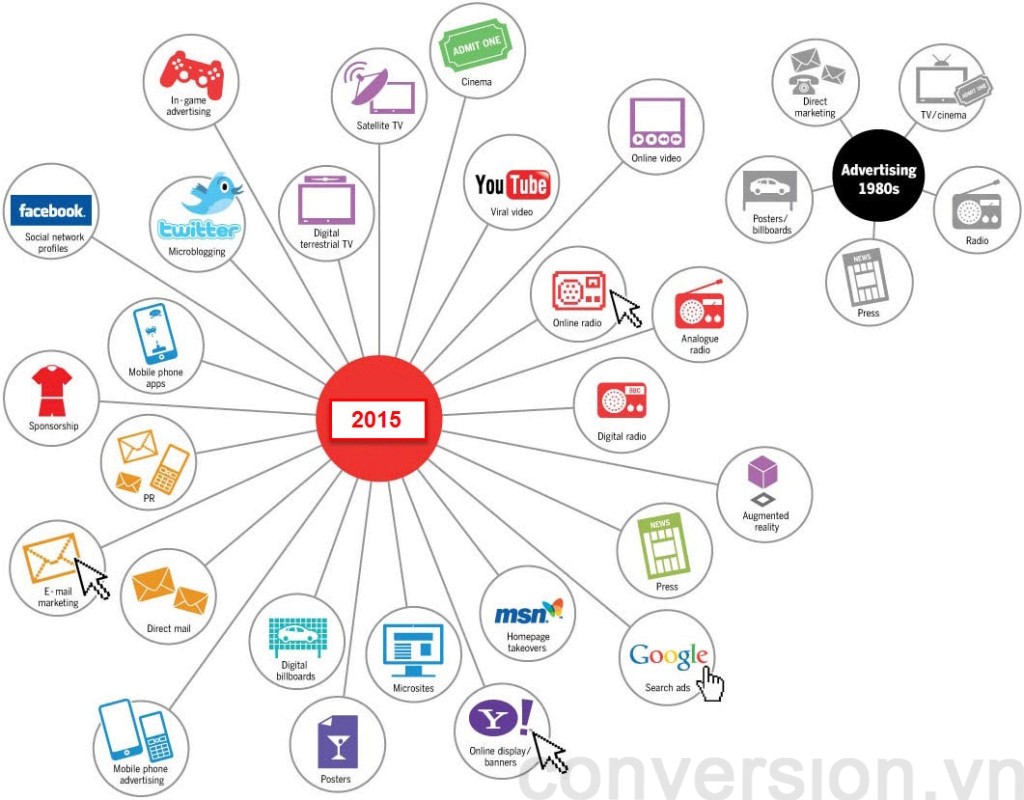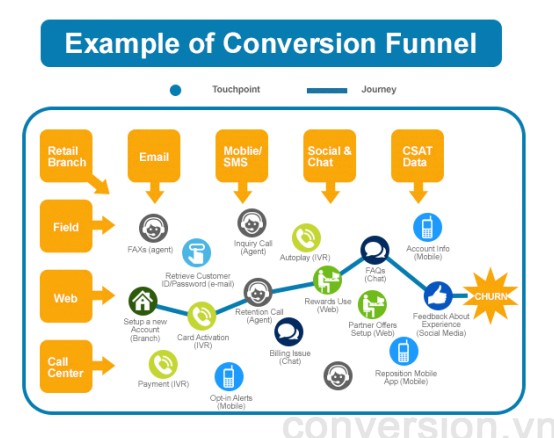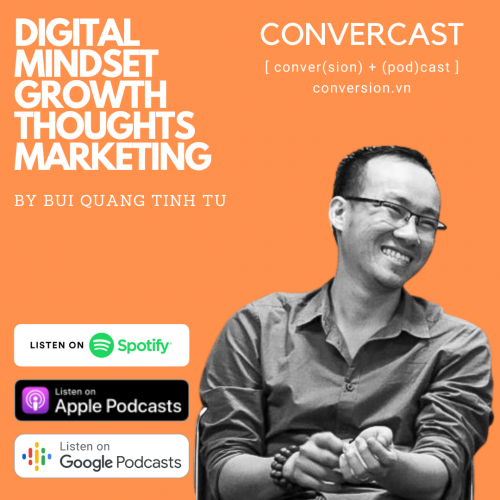How to Better Optimize Your Ads
Mục Lục
In advertising the measurement and analysis of data is an integral part of the optimization process to achieve the highest return on investment costs. Before going into the analysis of advertising effectiveness from channels, some basic and shortcoming definition of existing advertising channels will make it easier for new readers to understand the issue.
Advertising channels
Today brands have a lot of advertising channels to build brand awareness and boost sales. The advertising channels are usually divided into two concepts, Above The Line (ATL) and Below The Line (BTL), which aim to categorize the purpose of these advertising channels. “The Line” is the link of the message to the customer by dividing the Top (Above) and Under (Below) for clearer identification.
Above The Line: advertising activities aiming at building awareness and brand image through mass media such as TV, radio, outdoor, etc. ATL can also be used to promote sales by discounts or offers. However, ATL is difficult to measure precisely partly because the target audience is too large and there are no tools and methods to do so.
Below The Line: One-to-one focused advertising. BTL includes a variety of activities, including offline flyers, POSM flyers, banners and posters, sample broadcasts, telemarketing. The online segment of the BLT channels includes: email marketing, Internet display advertising, allowing access to small groups of customers who have been identified (target).
The use of ATL or BTL advertising channels is entirely up to the brand’s orientation, purpose, industry and target audience. A brand that specializes in FMCG (fast moving consumer goods) products, such as shampoos or toothpaste, will use a lot of ATL advertising channels as they need to hold onto the user’s awareness about the brand and product, to become the first choice (top of mind) when the customer needs. Or with a special promotion on March 8th of a brand specializing in women’s fashion, BTL is the optimal choice to achieve high ROI.
But even in the FMCG and traditional industries which rely entirely on ALT before, BTL channels are becoming increasingly important and attention-grabbing. Thus, in recent times, the definition of Through The Line (TTL) has come into being, referring to an advertising orientation that incorporates ATL and BTL in order to reach more demanding users and optimize the cost of advertising from each of these investments rather than engaging in a costly ATL battle with other competitors. One example of TTL is that when you are watching a TV show, you can download the app on your mobile device and interact with the game show at the same time.
Difficulties in measuring advertising channels
Whether it is ATL, BTL or TTL, efficiency measurement and data analysis to optimize costs and efficiency are mandatory requirements today. Many brands have set up measurement procedures to evaluate the effectiveness of advertising channels. For example, a brand in the service area, through the measurement and analysis tools, finds that TVC accounts for nearly 50% of the total cost, while advertising on Youtube accounts for only 5% of the total cost while bringing more searches and purchases on the website. The company also finds that Paid Search, which accounts for only 10% of total advertising costs, brought nearly 20% of total orders. With these essential advertising and promotional data, the marketing department optimizes campaigns by adjusting channel costs and successfully increasing the number of orders by 10% without having to spend any more cent on advertising.
In practice, however, things are not always as simple as the above example, because the measurement and analysis of data is far more complex and difficult, mainly because of the following reasons:
1. Too much information
Now for each ad channel, marketers will have different methods for measuring and analyzing advertising data: with Google Adwords you can see the parameters of Paid Search and Google Display Network; Local Ad Network / DSP / SSP / Ad Exchange will have their own dashboard systems to view each of these details; not to mention third party tracking tools such as MediaMind, Google DoubleClick, and TradeDoubler to measure performance seperatedly if you need testifying systems. There is also Google Analytics to collect parameters from web traffic sources, social monitoring tools to collect information from social networking channels, Heat Map Tools for collecting information about the actions of users on the website; Youtube, Facebook (or Vimeo, Dailymotion) videos also have their own metrics, and also data from such activities as email marketing, telemarketing, SMS, CRM and other offline activities.
Too little information is a problem but too much information is another issue.
Is having much data to analyze not a good thing? Not really. It is true that the measurement information of the same advertising channel can be completely different on different systems. For example, the index of an Ad Network on that Ad Network system will be different from the Google Analytics metric and will be different from the metric on a third party tracking tool. Facebook’s traffic ratings measured on Facebook’s Ads Manager will likely be different from those measured on Google Analytics and social listening tools. This is just traffic, for other metrics (unique visits, bounce rates, conversions, etc.) you will have a different set of parameters. It is normal for tools to come up with different numbers, and it is difficult to say which tool’s information is accurate because each measurement tool is based on different norms. However, this makes it very difficult for marketers to choose which source of information to believe and use it as the basis for determining the effectiveness of an advertising channel.
2. Interaction between channels
For example, you have a website and when you look at the conversion information for the last month you see: Direct traffic has about 1,000 conversions, organic traffic gets 500 conversions, GDN generates 300 conversions, Paid search makes about 700 conversions , Facebook brings nearly 800 conversions. If the amount of money you spend on advertising is the same for Facebook and Adwords then you can easily see that Adwords has more conversions with 1000 (Paid Search + GDN) compared with Facebook only 800 conversion. The next month you decide to cut Facebook’s costs and put more into Adwords.
Customers need to contact a lot of channels before they decide to buy
However, this decision may be wrong and instead of seeing an increase, next month you see a decrease in the number of conversions. Why such obvious parameters do not help you make the right decision? Maybe it’s because you forgot to bring in an important factor that is the relationship between the advertising channels. The mistake of marketers is to think that the channels of advertising work completely independently whereas the advertising channels whether online or offline, ATL or BTL are interrelated. And ignoring these effects can lead to underestimating the importance of advertising channels and making optimization and regulation of advertising costs ineffective.
3. Human factor when analyzing data
Evaluating and analyzing data to make decisions about ad optimization, is an important and demanding process. We can set up to automate almost every process from data acquisition to cost-effective comparison and self-tuning with the tools available. However, analyzing, drawing conclusions and making decisions are critical so that human factor from marketer is still required. Similar to that no matter how modern Google algorithms are, there must be a team of people who will review the results.
Humans are important factors in every process but are also what need to be considered.
But when it comes to the human factor, it is likely to be interfered with issues such as feelings, prejudices, and biases that will influence decisions and judgments. There are still a lot of reliance on “inspirational” and “transient” thoughts, not based on proven numbers and data, as the basis for decision-making. A concrete example is how many times I’ve heard in meetings and lectures when some marketers, analysts state: “As we know organic traffic is usually better than advertising traffic” or “direct traffic” is when the user directly typed your website URL and it can be inferred that people already know about your brand and then type in for direct access, etc. These statements are completedly of sentiment (supposing that organic traffic is more qualified) or even misunderstand the nature of the problem (stating direct traffic is when users type the URL to the website directly). Assuming that organic traffic or any other source of traffic is more qualified is statement coming from prejudice, if the traffic source from AdWords is not bringing good quality as organic traffic, you might not be optimizing it best. Direct traffic is not just traffic when people type in, and it is not really that who comes from this source is aware of your brand because many kinds of unidentified source traffic will be included with Direct traffic in Google Analytics.
In short, marketers’ prejudices or unstable knowledge can also be a factor in analyzing and evaluating the effectiveness of the advertising campaign.
Analyzing and optimizing your ads
Source: pinterest
With all of the above factors, how can a marketer conduct an analysis of advertising data and thereby extract the information needed to conduct the optimization of advertising costs more effectively? Below are some suggestions drawn from the writer’s experiences on this issue:
1. Paying attention to the parameters that are really important
As mentioned above, a lot of data is collected from various measurement tools and there is a lot of confusing and unnecessary information in the jumble. Marketers need to determine what is the purpose of the ad campaign and what parameters they need to focus on. Forget about indicators that do not contribute much, or even are useless to analyzing your performance, such as impressions, CTRs, followers, likes, and put more emphasis on metrics directly related to the quality of traffic such as leads, conversions.
2. Gathering information from multiple sources to see the interplay between channels
Custome rs do not just see the brand of the product once and immediately decide to buy or sign a contract. They may actually have seen it many times from various advertising channels before making a decision. Find out the touch points in your sales cycle to measure and collect more information about where your customers are coming from. For example, when a customer calls, the consultant may ask a quick question, “Where do you know the brand / product?”, the customer usually has no reason to not reply and you just need to record the guest’s answer. Or if the brand has store locations, you can prepare a flyer to collect customer feedback on the service and then ask them what source they come from. If customers come to the website you can ask customers this information when customers register for an account or when filling the purchase information. It is important to choose the right touchpoint to ensure that customers are willing to leave information without causing annoyance to them.
Setting up procedures to measure the impact of online advertising on offline and vice versa is one of the advisable things to do and this issue will be covered in the next articles.
3. All evaluations and decisions must be based on testing results
The relationship between the advertising channels is complex and depends on many factors such as customer behavior, seasonality, demand for products. Sometimes with information from the analysis of advertising data available, you need to apply slowly and in combination with A / B testing to see the effect of changes, avoid changes and Massively adjust but not achieve the desired results and ultimately not draw the conclusion that something good and not good.
4. Improve and update knowledge
This is the solution to the human factor mentioned in the part about difficulty above. There is no other better way than human doing the work of analysis and optimization to improve and upgrade your existing knowledge as well as broaden your understanding. A broader and deeper knowledge base will give you a more comprehensive view of insights that you may not have seen before.
Along with the change and development of platforms and advertising channels, ad analysis and optimization is a must-do and nonstop task. Hopefully the suggestions outlined in the article will be useful for those who are looking for solutions to improve their advertising campaigns more effectively. If you have any comments or thoughts on this issue, please leave below.







 Vietnamese
Vietnamese English
English